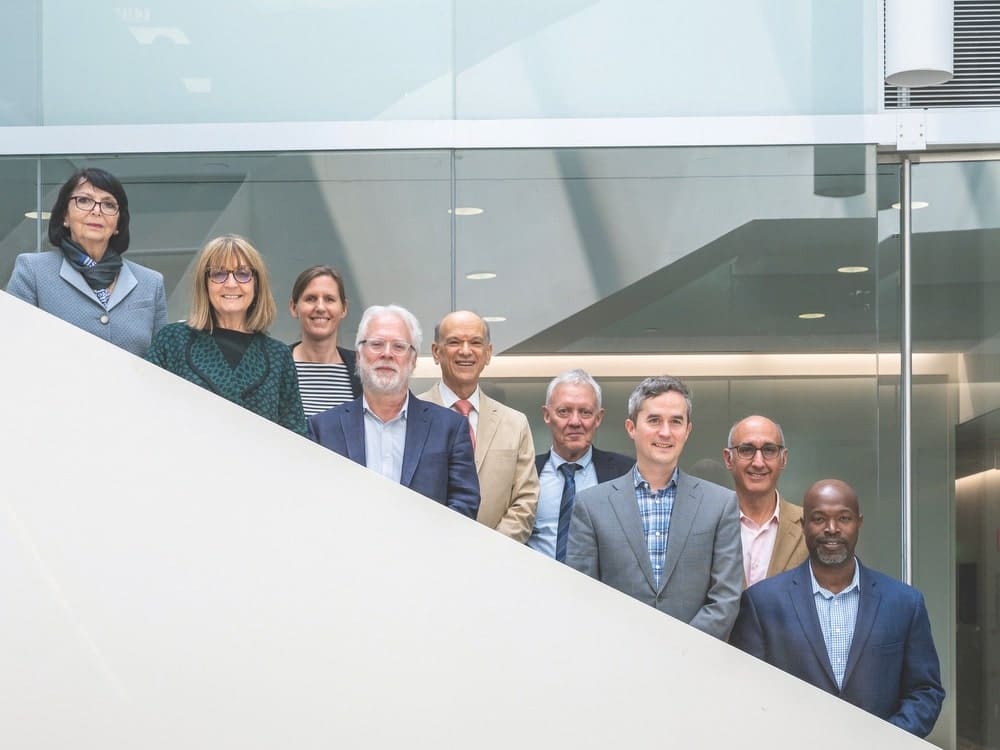
viemagazine-HERO8-min
Slow Your Scroll
The Hope for Depression Research Foundation Sheds Light
Interview by Emme Martin | Photography courtesy of HDR
Mental health discourse has solidified itself into the current zeitgeist following numerous seismic societal shifts, from the advent of social media to the global pandemic. As a result, conversations surrounding mental disorders and their treatments have become less taboo than in the past, allowing incentive to build toward finding solutions. However, it will take more than conversations to relieve the growing number of adolescents and adults with mental illness. It will take action.
The Hope for Depression Research Foundation (HDRF) is at the forefront of the resolution. Executive director Louisa Benton leads the foundation to find new therapeutic approaches to depression based on a fundamental understanding of the brain’s complex mood centers. In light of limited government funding allocated toward mental health research, private initiatives such as HDRF are crucial to realizing a healthier society. VIE spoke with Benton about social media use by adolescents, and she shared insights into its harmful effects while giving hope for a better future.

Hope for Depression Research Foundation’s executive director, Louisa Benton
VIE: Tell us a little about who you are and how you became involved with HDRF.
Louisa Benton: I have been the executive director of HDRF for ten years. I became involved because of my passion for brain science and my commitment to advancing mental health for every American.
VIE: What is Hope for Depression Research Foundation’s mission?
LB: HDRF is the leading nonprofit dedicated exclusively to finding the root causes of depression in the brain and developing new and better treatments. Our research aims to redefine depression treatment at a time when the world needs it most.
VIE: How would you characterize depression or depressive symptoms?
LB: Depression is not just a bad day or feeling blue. Depression is a mood disorder that causes a persistent feeling of sadness and loss of interest that can impair your daily functioning.
VIE: Can you share the current statistics on adolescent depression?
LB: Our nation’s young people are facing an unprecedented mental health crisis. Even before the pandemic, rates of depression, anxiety, and suicidal thoughts were on the rise. The pandemic exacerbated those issues, creating isolation and disrupting learning, relationships, and routines.
- More than one in three high school students have experienced sadness or hopelessness, a 40 percent increase since 2009.
- Every day, almost four thousand children and teens attempt suicide.
- Suicide is the second leading cause of death for teens ages fifteen to nineteen.
- More than half of parents and caregivers express concern over their children’s mental well-being.
VIE: How much of a role has social media played in the recent increase in adolescent depression and other mental health problems?
LB: Findings regarding the impacts of social media on adolescent health are nuanced. However, many clinicians and researchers agree that there are some adolescents who are more vulnerable to screen time than others.
Mental health problems can occur if the teen’s use of social media is not properly balanced with other activities, including exercise, sleep, and time spent—in real life—with other people the teen trusts and loves.
VIE: What specific factors about social media do you believe contribute to the platforms’ roles in declining mental health amongst the youth?
LB: Through social media, teens have 24/7 access to a negative news cycle that creates an atmosphere of existential gloom for not just teens but everyone. Through social media, teens also have infinite opportunities for feeling rejected by their peers, from actual online bullying to not receiving enough “likes” on a post. Kids see everyone on social media seeming to have the time of their lives. They are bombarded with messages through the media and popular culture that erode their self-worth.
VIE: Do you believe there is a healthy way to use social media?
LB: Yes. It is important to bear in mind the new role of smartphones in kids’ lives today as lifelines to their entire community. Parents need to have a conversation with their children to find a middle ground. They need to come together with their kids to decide on goals and agree on how much screen time is OK. Parents likewise need to be good models of screen time.
Mental health problems can occur if the teen’s use of social media is not properly balanced with other activities, including exercise, sleep, and time spent—in real life—with other people the teen trusts and loves.
VIE: What is an appropriate age for children to join social media platforms?
LB: Experts agree that thirteen would be the absolute minimum; however, it’s difficult to prescribe a precise age limit as kids need to have social and emotional skills to cope with the demands of social media. Also, certain platforms, such as Facebook, require the child to be thirteen by law.
VIE: Can you tell us about some of the recent findings from your research?
LB: Our research team, known as the Depression Task Force, has led the field in the study of brain circuits and molecules that underlie depression. As a result, we have a brand-new category of medication in pilot clinical trials that works differently than the common medications available today. We believe this new medication will help an entire segment of depressed patients who have not responded to conventional SSRI medications. That is because the potential new medication works on different molecules and circuits we’ve recently discovered to be important in depression.

In 2010, HDRF launched its Depression Task Force, an outstanding collaboration of leading neuroscientists from research institutions across the US and Canada.
VIE: Do you have hope for the future of depression treatments?
LB: Absolutely. Advances in research and technology are making it possible to identify, treat, and track the signs of depression more precisely than ever before.
This is the most exciting time in the entire history of the field of psychiatry. We have been operating in the dark, without a good understanding of what’s happening in the brain, for the last sixty years. Now the sunlight is really beginning to penetrate our understanding of the brain in ways that are relevant to thinking about the biology of the brain and the treatment of depression. Just as technological advances defined the last century, we believe advances in brain biology will define this century.
— V —
Visit HopeforDepression.org to learn more about the Hope for Depression Research Foundation and find out how you can help or donate to the cause.
Share This Story!
KEEP UP WITH THE LATEST STORIES FROM VIE
















































































































































